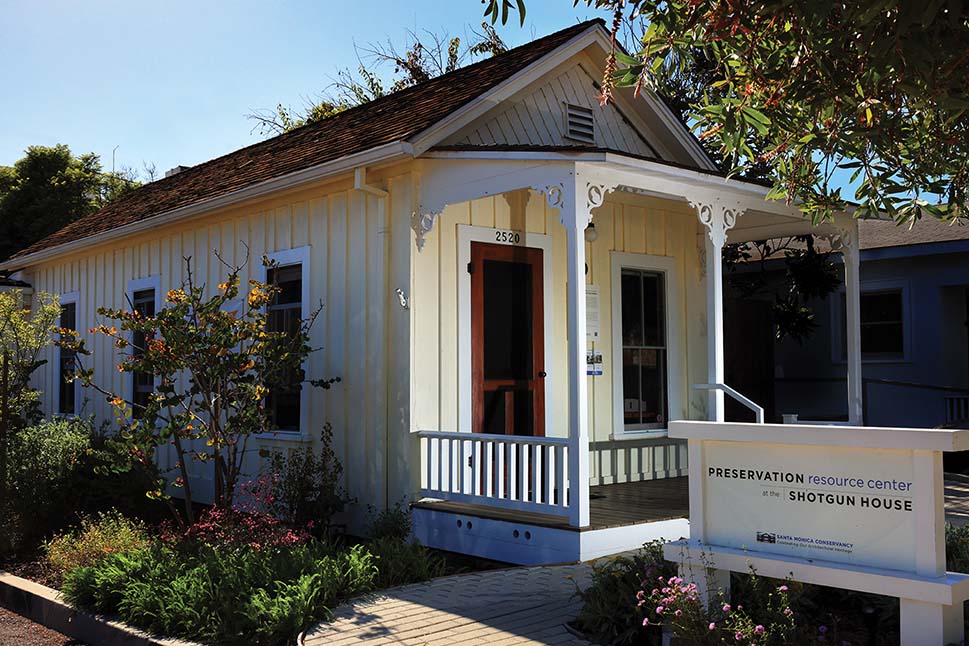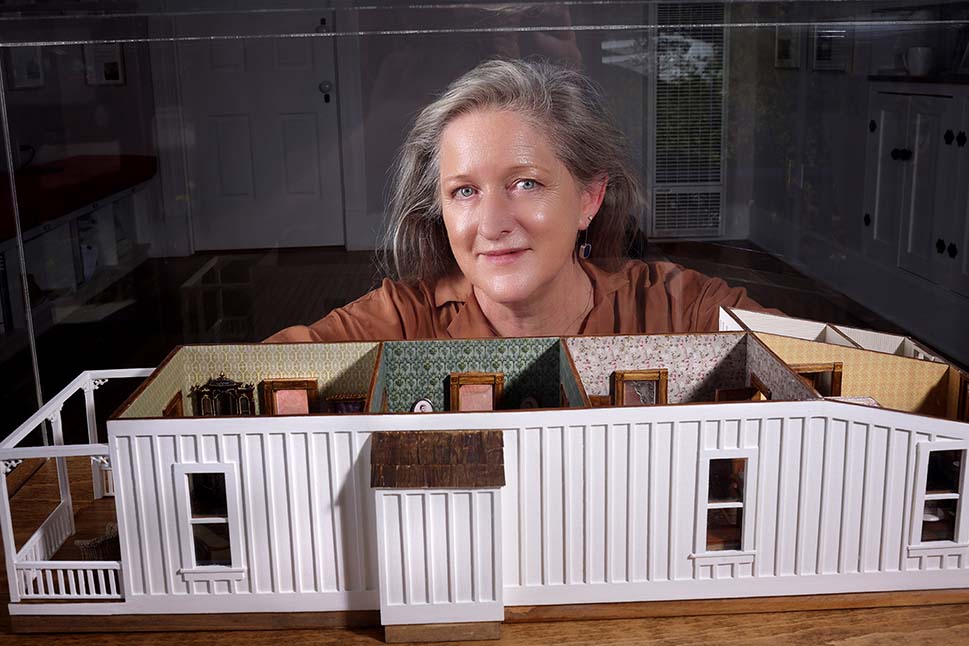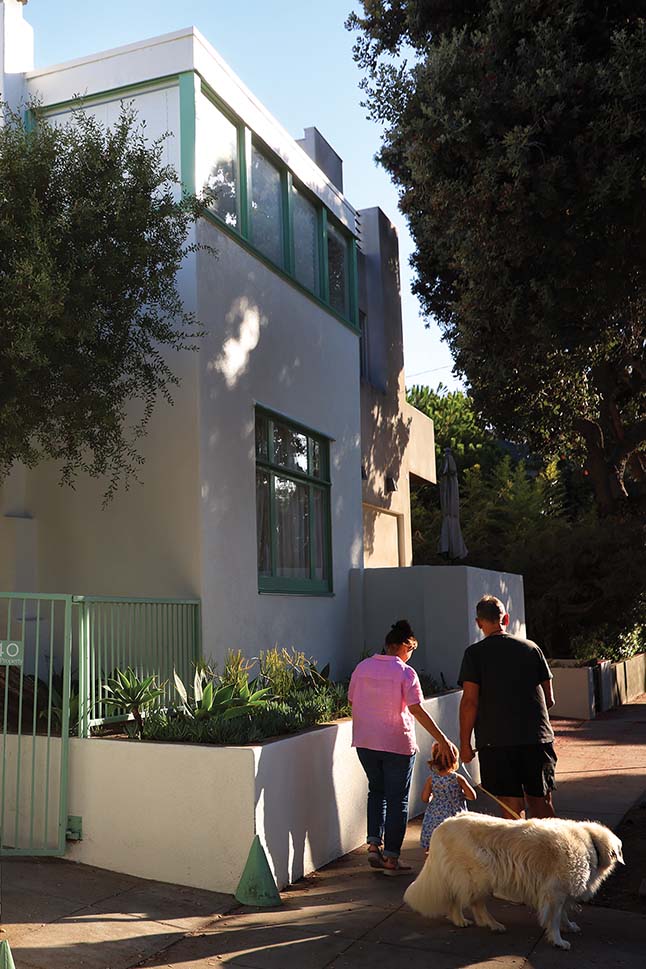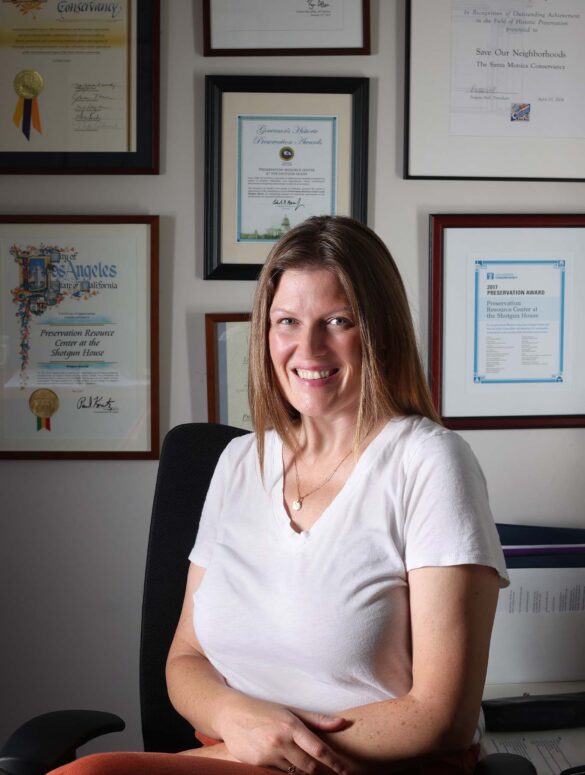Text By Urs Baur
Images by Rick Loomis
There’s a common misconception that conservation is anti-development,” says Catherine Azimi, Communications Manager for the Santa Monica Conservancy. Azimi and Executive Director Kaitlin Drisko are seated around a small desk in the iconic Shotgun House, the Conservancy’s headquarters, aka the Preservation Resource Center at Second Street in Ocean Park—an example of historic preservation via adaptive reuse. “In truth, we often collaborate with developers to ensure that projects are historically sensitive. Historic preservation can be entirely compatible with the needs of an evolving city,” Azimi suggests.
The Santa Monica Conservancy was founded in 2002 as a grassroots, nonprofit organization, dedicated to promoting widespread understanding and appreciation of the cultural, social, economic and environmental benefits of historic preservation. Since then, the Conservancy has emerged as one of the leading voices in the city’s conservation movement. Under the guidance of Executive Director Kaitlin Drisko, a seasoned expert in historic preservation, the Conservancy is poised to meet current challenges. “Conservation projects are not only about structures, they are also about people,” Drisko says.” I like to think we connect people across time, and in order to truly understand present day Santa Monica one needs to understand the past.”

Indeed, long before its modern landmarks, before the hustle and bustle of the pier and the promenade, before the high-end shops and restaurants, the multimillion-dollar Spanish colonial revival homes around Montana Avenue, the modest California bungalows, and the youthful energy emanating from its educational institutions, the area was home to the Tongva people; their villages and sacred sites, the only man made markers dotting this landscape.
As time’s wheel turned, their settlements were displaced by a built environment accommodating the needs of the Spanish colonists, Mexican ranchers, and later, the waves of American settlers who anchored their dreams on this coastal stretch of land. As the pace of development hastened, especially during the mid-late 20th century, most of the sites bearing witness to this history would have been lost, were it not for the efforts of those advocating for the importance of preserving and honoring our collective story.
While the Conservancy plays an important role in protecting important sites of the past, its deeper mission is creating community around a sense of a shared history, according to Drisko. In recent years, the organization has played a crucial role in facilitating public discourse around fundamental questions such as what constitutes historical significance and how best to support and align the diverse interests of the various stakeholders.

Inspired by a renewed focus and interest on the many facets of Santa Monica’s cultural heritage, in 2020 the Conservancy launched a virtual series, Santa Monica Mosaic, which gives voice to underrepresented and ‘forgotten’ histories. Episodes feature representatives from a variety of different backgrounds speaking to their own lived experiences, including one Japanese-American family’s story of assimilation back into the city post-internment during WWII, a commemoration of the African American experience at the Belmar Triangle through the Belmar Art + History project, and a chronicle of European Jewish migration to the ‘promised sand’ of Santa Monica.
“Conservation can no longer be seen simply as a matter of preserving structures, but also ensuring that the tales they house—tales from all of the city’s communities—are valued and given voice,” Drisko explains. “Adaptive reuse is key to balancing historical preservation with modern needs.” Azimi points to the former Sears building, historic Nikkei Hall, the Santa Monica Professional Building, and the Associated Telephone Building as examples of successful adaptive reuse projects that reimagine historic properties for contemporary use.

140 Hollister Ave. Image by Rick Loomis.
Under Drisko’s leadership, the Conservancy is set for expansive community outreach. She’s especially keen on celebrating Santa Monica’s upcoming milestones—its 150th birthday in 2025 and the influx of international visitors for the 2028 Olympic Games. “At its core,” she says, “the Conservancy believes in a simple yet powerful idea: A city that understands its past is better equipped to navigate its future.”
For those wanting to immerse themselves in Santa Monica’s rich cultural heritage, the Conservancy offers a variety of in-person, or downloadable self-guided tours, and virtual programs that invite visitors and locals alike to journey through time, from the Tongva settlements to modern-day marvels. Says Azimi: “What I’ve found in preservation is that people really are gratified to understand and have literacy around the built environment they inhabit because it gives people orientation… a sense of place. If a city doesn’t have history, arguably, it doesn’t have meaning.”


